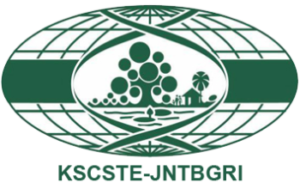The project aimed at benefit sharing with the local Kani tribes of the Southern Western Ghats based on the use of tribal knowledge for developing the clinically validated restorative drug ‘Jeevani‘ was initiated before long before the Rio Summit in June 1992 (Convention on Biological Diversity, CBD). The CBD, however, provided a broad framework for the botanic gardens to get involved in conservation research comprising plant identification (Art.7), establishment of conservatories (Art.9), bioprospecting (Art. 10) and public education/awareness (Art. 13).
Even from the pre-CBD period, TBGRI was engaged in activities collectively fulfilling various provisions of the Convention. These developments in the formative years of the Institute bore testimony to the foresight and conviction of the then leadership and set the right tone for a variety of developmental programmes contemplated for the rest of 1990s.The quest for generating new knowledge out of the plant resources particularly from the Western Ghats region was evident from the ambitious projects on diverse groups of plants.
Survey and documentation of the flora, organization of living plant collections, selection and improvement of economic species, development of packages and practices for their cultivation, capacity building through training, self-employment and income generation through community participation in horticulture and herbi-culture activities were launched in an integrated way. Orchids, anthuriums, medicinal plants, rattans, wild fruits, tree species, palms, curcumas, Piper, Zingibers, Citrus, bananas, cacti, succulents and wild ornamentals were collected and conserved.
A gene bank was created comprising field, seed, meristem and cryobank activities. Various features of the ecosystem such as plant-animal interactions were studied. Research activities were scaled up to the levels of bioprospecting, bioproduction, evaluation, validation, product development and benefit sharing. Molecular markers were developed for the identification of genotype. The endemics received special attention in all the investigations.
The institute also showed its commitment towards environmental education, during this period. Both conventional wisdom and molecular techniques were used to achieve the conservation and preservation of tangible assets. In recognition of these achievements and contributions, the Department of Biotechnology, Govt. of India offered to establish the G-15 National Gene Bank for Medicinal and Aromatic Plants and a Sub-Distributed Information Centre in TBGRI, in 1992-93.
In 1994, the Ministry of Environment and Forests, Govt. of India accorded the status of the Centre of Excellence in Conservation Research to TBGRI which is also accredited to a number of national and international bodies. The post-1995 period continues to be the most productive in terms of infrastructural facilities created, publication of books and quality publication of papers in reputed journals. In order to keep pace with international developments, at least half-a-dozen patents are either sealed or filed, technology transferred to industry and marketable products developed.
During the past 44 years of its existence, TBGRI has handled subjects (conservation, sustainable utilization, benefit sharing) that are unique and very relevant to a developing country like India. In fact, the Institute has been a pioneer and torch-bearer to the nation in this area of specialization. Being the largest conservatory garden of its kind in Asia, its vast plant holdings from different phytogeographical regions assembled in a 300 acre forest land in the natural settings of the legendary Agasthyamalai are yet to be scrutinized fully.
The taxonomists of the Institute have unearthed at least 90 species from the Western Ghats and many more novelties are in store and yet to be described. The saga continues with the committed efforts of the scientists and green thumbed experts in the field to complete the unfinished agenda and create a garden which should be the Eden of the South, right in God’s Own Country. Kindled by the spirit of his concept, the State Government of Kerala took a far-sighted decision to keep TBGRI as an autonomous institute and “Pride of the State”.


